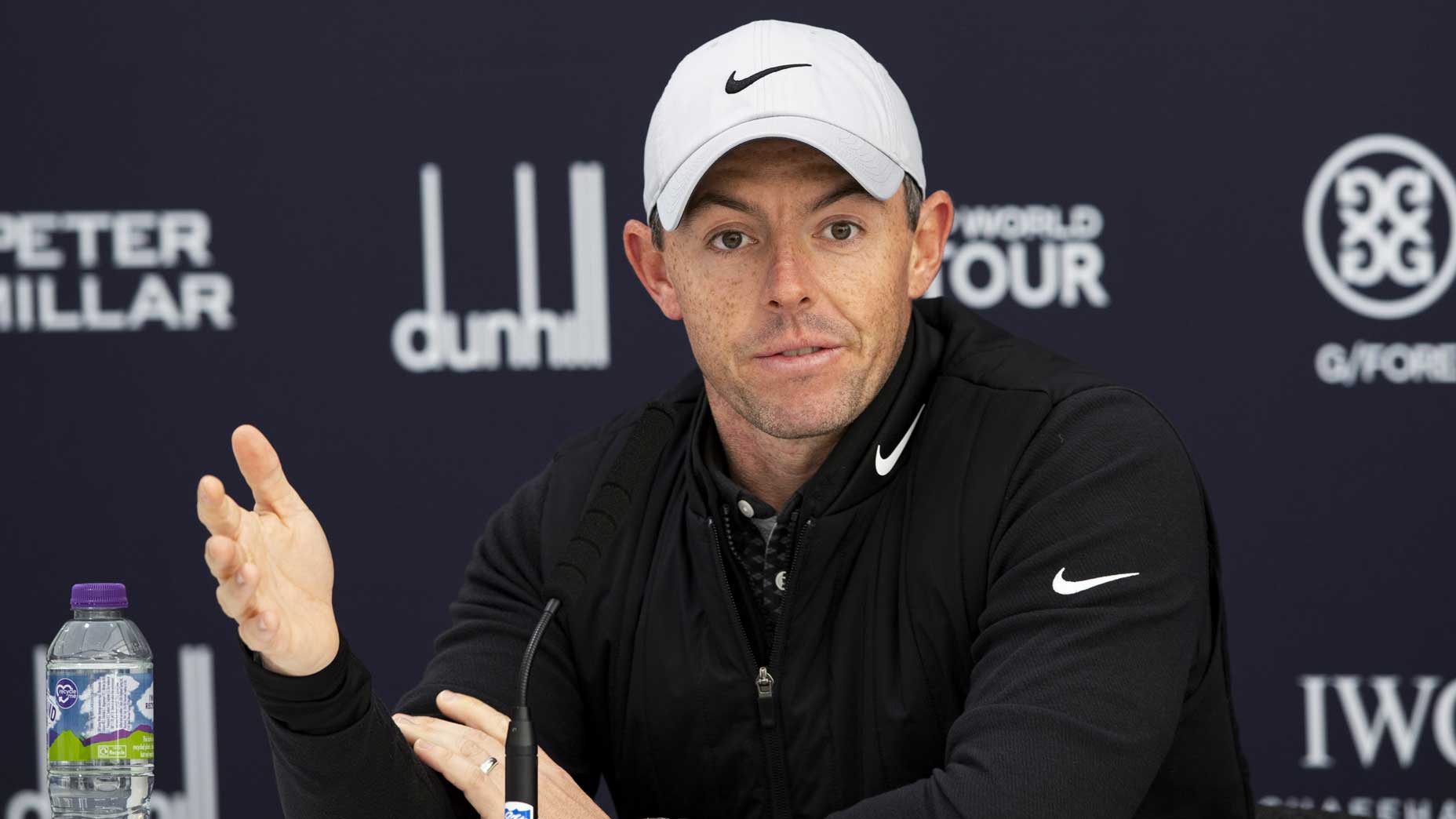As the Speaker of the House for the PGA Tour these days, Rory McIlroy press conferences are different. He is asked more questions about Tour logistics and policy than the status of his swing or how he’s feeling about his wedge game.
McIlroy is often asked to defend the Tour, to respond to comments made across the golf ecosystem (see: Phil Mickelson last week), and to envision the future through hypotheticals. This week, for McIlroy, that meant weighing in on the PGA Tour’s schedule changes, of which there are many.
The Tour has officially reverted to a January through August regular season schedule with a major injection of money, creating 13 “elevated” events in addition to major championships. After the season ends in August, though, there’s still some uncertainty. The Tour has clarified that the top 50 players in the FedEx Cup will qualify for a series of fall tournaments with no cut and huge purses as well, likely to be held overseas. The rest of the Tour is bound for a different fall series of events that commissioner Jay Monahan dubbed a “compelling, consequential final stretch” where players can improve their status entering the next season.
Winners and Losers from the PGA Tour’s reimagined scheduleBy: Dylan Dethier
Much of it is…still quite murky. So Rory, while the Tour figures it all out, what should the fall season really look like?
“Football,” he said.
“I mean, it’s football season, right?”
It is football season. The PGA Tour is acutely aware of it. Perhaps no sport has altered its schedule more than pro golf to adhere to when NFL games are taking place. The Tour pushed up the FedEx Cup Playoffs in recent years so that it would not have its season-ending competition taking place while sports fans are glued to RedZone. The Farmers Insurance Open, one of the more prominent events in the PGA Tour’s early-season schedule, has played its last two iterations Wednesday through Saturday to avoid competing with the NFL’s Championship weekend. If football is taking place, it’s best to not try and compete, McIlroy is saying. And he’s right, but that’s not all.
“I think we need to get to the place where it’s not oversaturated,” he continued. “I would love us to come back in January and people will have missed watching competitive golf. I don’t think that happens right now because there’s 47 events a year.”
What McIlroy is arguing for is not something anyone could have been prepared for years ago. When Tiger Woods burst onto the scene in the 90s, the PGA Tour couldn’t get enough events on TV. But a modern conundrum has manifested. It’s become difficult for golf fans to know which events are the most important beyond the majors.
When top players are on one week and off the next, and their schedule is never fully guaranteed until they show up for their tee time, it’s not the easiest sports league with which to engage. And when one season so quickly blends into the next, there is no time for golf fans to take a pause, reset their fanhood and build anticipation for the next big stretch.
The Tour is ever-present, but McIlroy is arguing maybe it shouldn’t be.
Is the Honda Classic just as important as the Houston Open? They dish out the same amount of FedEx Cup points (500). They offer the same exact purse ($8.4 million). They even have pulled a similar strength of field in recent years. But one is held in February during the run-up to the Players Championship and the Masters while the other is held in October when fans have turned their Sunday TV viewing habits toward football.
“I think to get the most fan engagement that we possibly can, we have to let people miss it for a little bit,” McIlroy said. “I’m not comparing golf to football at all, but you think about the exclusivity of the NFL and they play 18 weeks a year. Then people are just so ready for football season to start again. I’m not saying that golf’s going to be that way, but you’ve got to let people miss it a little bit.”
Football fans are probably ready for a break once the Super Bowl passes. But after a couple-month hiatus of games, including the NFL draft and free agency, suddenly summer rolls around and fans are rabidly looking forward to Week 1. The Premier League in England football has mid-season breaks that allow for the same type of demand to build. After a gauntlet of, say, five Premier League games in 21 days, the league schedule will clear for weeks while players play with their national clubs or teams add to their rosters during a transfer period. The PGA Tour has very often kicked off a new season within two weeks of the previous one ending. There’s no room for fans to breathe and “miss” the product. The fall is a time where golf could back away even further from football season and allow for that.
“And I’m not saying we’re not going to play any golf in the fall,” McIlroy said, “but the fall is maybe more of an international flavor. It’s an opportunity for guys to travel the world a little bit, grow their brands in different countries, but the real competitive golf season is January to August. That’s where I see it.”


